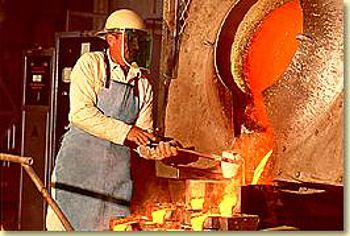 Interested in advantages and disadvantages of gold mining in South Africa? Learn more about the gold-mining advantages and disadvantages in South Africa…
Interested in advantages and disadvantages of gold mining in South Africa? Learn more about the gold-mining advantages and disadvantages in South Africa…
Gold-mining in South Africa started in full force in 1887. When the newly created town of Johannesburg started filling up with foreign settlers. South Africa is considered the world leader in mining resources. Because it has an abundant amount of natural minerals and gemstones.
It is by far the largest producer of gold as well as platinum in the international minerals market. In fact, its diamond industry is ranked as the fourth largest in the world. And even though the entire mining industry is more than a century old, it is still considered largely untapped. Only matched by the former Soviet Union in terms of its reserves, South Africa has a large potential and therefore offers many advantages for gold mining enterprises.
Not only does the country have the minerals. But it also has done extensive development and research and incorporated the use of high-tech devices to mine effectively. That makes it a strong international competitor. Because its world-class facilities and equipment are available to facilitate gold and platinum extraction along with creating carbon and stainless steel or setting up aluminum production.
Disadvantages of Gold Mining
The richest mines for gold-mining are the Rand and, historically, the diamond millionaires of Kimberley quickly located to Johannesburg to cash in on the gold rush. Even though there’s a large quantity of ore for mining available, there are many disadvantages offered by the precarious nature of mining. The rocks are heated at 50°C and are located at depths of 3000 m.
Large quantities of water are pumped outside to make space for human and machine entrance. It is very costly and there is now a requirement for new refrigeration systems. That allow workers to work in these conditions at such extreme depths in relative comfort.
The world’s largest ice machine, which has 3 million times the capacity of a household refrigerator, is placed in the Harmony mine. This entails a high degree of investment in infrastructure. And, if anything breaks down, a whole day can be wasted until the malfunctioning machinery is replaced or repaired, which is also not easy. Half of the production costs lie on equipment while the other half are borne by getting good quality labor.
This is another major disadvantage. Because there’s a lot of pressure on gold mine owners to increase the wages and improve conditions all of which contribute to their expense. In the years 1970 to 1990 gold production had fallen by 40% and the quality of the gold ore was drastically reduced. This indicates another major disadvantage as overhead costs and technical issues run deep. As the productivity decreases the wages are increasing and low depth mines are competing with the older ones.
The disadvantage of mining gold is also evident in the fact that while the international gold price fluctuates the cost of overheads remains constant. And therefore directly affects the profits of the mining firms.
Advantages of Gold Mining in South Africa
Conversely, advantages include the following:
Gold mining in Africa not only provides vast opportunities for employment, but also is a good source of trade.
This is evident in multiple facets both in terms of unfinished gold and finished gold ornaments. That create vast employment opportunities for skilled and unskilled locals as well as foreigners.
A large number of foreign employees work for the gold mines in Africa. And this brings in tourism from visiting families as well as international exposure.
Furthermore, the families are also a source of income generation as they occupy accommodations. And need to school their families, thereby providing foreign currency to the local economy. Gold is also one asset that can be traded across the board at any time and it can be used to back currency. It has resulted in a change of ownership structure and has empowered the local black populatione.




